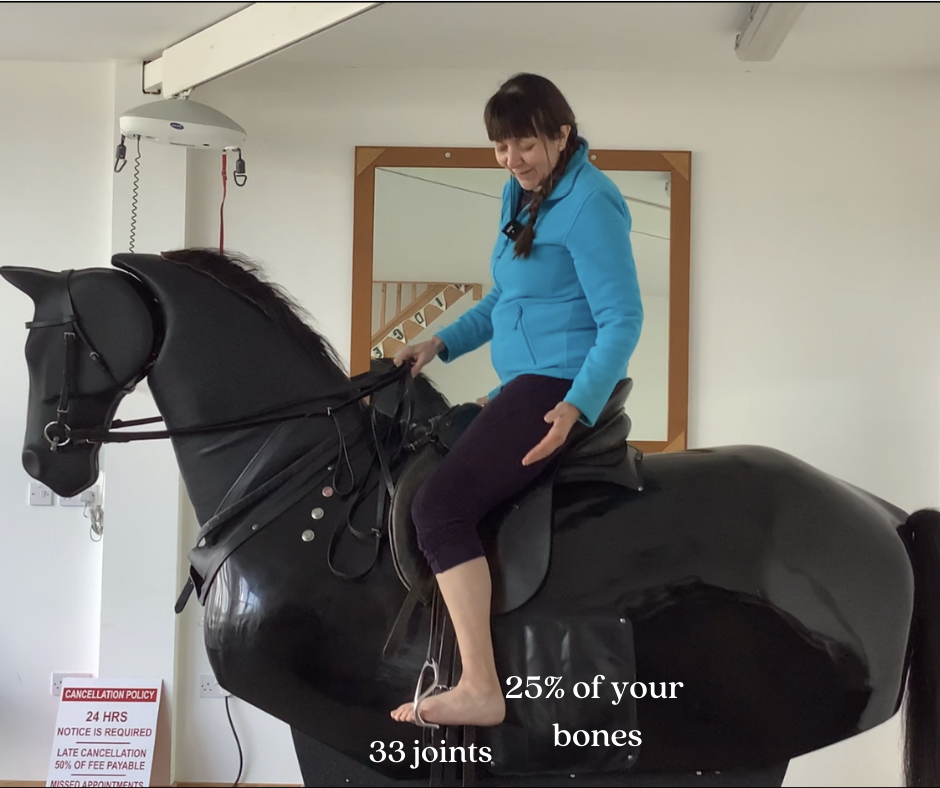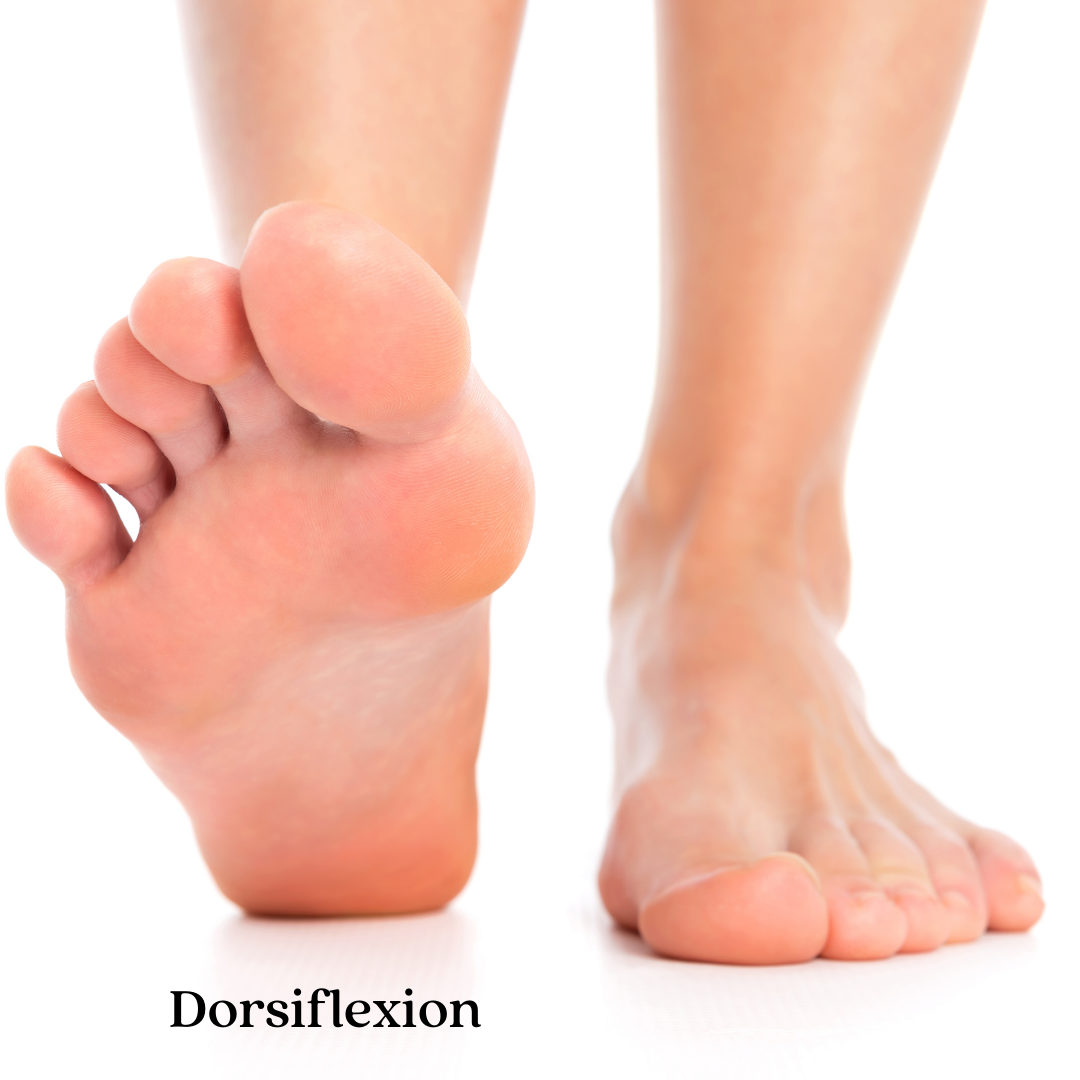Why your feet could be a major factor in your riding difficulties!
No Foot, No Horse and Rider
I qualified as a equine and human therapist twenty five years ago and worked in a multidisciplinary practice. It amazed me how little importance was placed on the human foot in comparison to that of the equine. Although human foot problems were widely recognised as a major cause of referred pain and structural compensatory patterns, the most proposed treatment seemed to be orthotics.
The saying “no foot, no horse” dates back centuries and I would hazard a guess it is one that every horse person is aware of. In my earlier years as a horse crazed teenager, I didn’t really understand its significance, but experience taught me why the foot is deemed the most important anatomical structure of the horse.
The Rider’s Foot
Now consider the importance of your feet, your base of support. Did you know that 25% of your bones resides from the ankles down? And there are 33 joints within the foot, that’s a lot of movement potential and adaptability to move over varied terrain. The environment you move on is very important in the development and maintenance of your feet.
When loaded, the foot starts a chain reaction of movement and stimulation throughout the body. As the body works together, as a whole unit. So, if parts of the foot aren’t being used, the rest of the body will suffer. Often gradually and silently, building weakened patterns through the body.
Pain in the saddle?
The Foots Role In The Riders Balance
The rider’s foot balance, development and tracking are as important as the horse’s. Foot pain, back, knee and hip issues, ankle weakness, pelvic floor issues and so much more can be down to the health and development of your feet! And as the need for replacement knee and hip joints rise. Foot weakness and immobility is a large factor in the extra wear and tear placed upon the body. Despite this the human foot continues to be the most neglected part of the body.
And these problems are taken to the saddle where they are highlighted. For example, an inability to drop the heel, balance issues, sitting crooked, losing stirrups, toes turning out to name a few. I have met people who struggle to mount because their hips were so stiff and the root cause was their feet. Scoliosis cases where improving foot strength and movement had really helped them both in and out of the saddle. Every part of your body works together if allowed!
When you walk, some of the natural occurring movements of your feet are called dorsiflexion (where the foot is raised up towards the shin) and plantarflexion (where the top of the foot points away from the leg) But what If your footwear is limiting this movement? If you don’t use it you lose it and this applies to the muscles of your feet. Weak feet, stiff immobile ankles will affect elements of your riding, your foot strength and the wear and tear on the rest of your body.
Now look at your stable yard boots, pick them up and pull the toe upwards. How much flexibility is there? And when you think about it, is your footwear restricting your movement ?
Is the sole so thick you can barely feel the ground? Riding boot’s toe boxes get increasingly narrower. I’ve met riders who experience numbness in their foot when riding from the compression of their riding boot. Continuously squeezing your toes into boots that are too narrow can lead to your toes adapting into this posture.
Look at your feet, their development gives you an insight into how your footwear may influence your movement. (Your hips and the rest of your body are involved in your foot placement also) Toes bunched together? A toe or two slightly rolled one way, bunions, flat feet? None of these are normal, part of the ageing process or set in stone. You can use the body’s highly adaptable qualities to reverse these.
Your feet are your contact point with the ground which you rely upon to navigate you through your environment. Leonardo da Vinci described the human foot as “a masterpiece of engineering and a work of art.” And “the most complex piece of machinery ever built”! Yet many people have little connection to theirs because of their footwear choices.
Are your boots dictating your movement?
A lot of today’s footwear doesn’t allow the muscles of the feet to work. Companies often market shoes promoting their supportive, protective, and cushioned qualities. Support correctly used is a short-term aid as the body regains strength. So why do we need to support? Why have been led to believe our feet are weak? Long-term support is essentially putting our feet in a cast. Preventing the use of the foot musculature and sensory nerves and many other structures. Feet, in many cases, need to be strengthened.
33 joints and a lot of movement potential
For the rider, think about the affects of weak feet in the saddle. There is intrinsic foot musculature, which is entirely within the foot and extrinsic foot musculature originating in the lower leg and insert into different portions of the foot. Weak immobile feet equal stiff immobile ankles interacting with every part of the body.
The Foots Position In The Stirrup
Think about the potential to improve your riding skills is you had strong, developed feet. Awareness and control of those subtle movements and balance shifts connecting like a superhighway with the rest of the body. Your feet resting and grounded in the stirrup.
Heels, even small ones, are placing you on a starting block. Tipping you forward with every step. Which places extra wear and tear on specific areas of your joints and shortens your Achilles tendon. Altering the vertical alignment of your whole body! which has a big impact on the long-term function and health of your body.
Alignment Matters!
The Horse’s Foot Balance and Alignment
Natural alignment is important for both horse and rider. You can see from this horse’s radiograph the altered alignment of the bones on the top photo. This sadly produces excess wear and tear on the structures within the foot.
The hoof supports the horse's entire body it’s their base of support. You will be familiar with the results of foot issues on the horse’s body. Approximately 70% of equine lameness issues are believed to derive from the foot. The affects of incorrect foot balance can happen in a relatively short space in time in some horses, whereas in others the damage slowly and quietly escalates. Causing compensatory patterns and musculoskeletal damage through the body. Correct foot balance is of paramount importance for health, the longevity, and comfort of the horse. We also need to consider our own feet in terms of health and longevity.
Barefoot life!
Transitioning To Barefoot Shoes
I gradually transitioned to barefoot shoes, which is important. Alongside performing foot exercises (absolutely necessary) and began moving on varied terrain. I live a very busy life; barefoot shoes now save my time as I am working my feet and balance as I go through my day. Human barefoot or minimalist shoes are shoes which allow the muscles of the foot to work.
Six, ten, or even twenty years ago, if someone had told me I’d spend my days in barefoot shoes, I wouldn’t have believed them. Despite significant injuries requiring me to relearn walking at least eight times, the gradual strengthening of my feet has been astonishing. Now, I do things I never thought possible, even after decades-old injuries. I’ve regained confidence, connection and function to my feet and ankles and both myself and the rest of my body is thankful for that!
Tips
Working on your foot tracking should be a gradual process
The boots alone will not be enough, you need to perform the initial foot exercises to strengthen and mobilise your feet.
Performing the exercises little and often is the best way to make lasting changes
Which can so easily be done whilst watching tv etc
Vary your terrain to work the muscles and joints of your feet
If you only walk on flat and level ground, you cannot completely develop your feet or body!
Keep going it will become a habit
Want to Strengthen Your Feet?
Sign up to my free newsletter below and get your free foot exercises!











